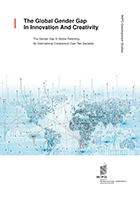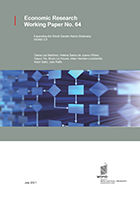Innovation Gender Gap: Gender Parity in Patenting Expected by 2061
The global gender gap in patenting is shrinking, but progress is uneven across regions. Find the forecasts here.
The share of women inventors listed in patent applications worldwide has been increasing over the past two decades, with the last five years showing the fastest growth rates.
At the current pace, we will close the gender gap in international patenting by 2061. This means that the share of women inventors listed in patent applications worldwide is forecasted to reach parity in 38 years.

However, gender balance is not happening at the same pace across regions. The Northern American region is expected to bridge the gender gap in patenting first, by 2055, followed closely by Asia in 2056. Latin American and Caribbean region will close this gap in less than 45 years (2068), while Europe and Oceania will take longer, with a projected time of 65 years (2088).
These findings are some of the highlights from WIPO’s latest report on the global gender gap in patenting, released in commemoration with International Women’s Day 2023. The report examines the patenting trend of women inventors over the past two decades. It provides the latest figures on women filing for patent applications through the WIPO’s Patent Cooperation Treaty system, and uses an improved World Gender Name Dictionary.
Other key takeaways from the report include:
- Women inventors are often concentrated in specific industries, such as biotechnology, food chemistry, and pharmaceuticals, while fields like mechanical engineering have fewer women inventors.
- Women inventors are more commonly found in academia than in the private sector.
- Most of the observed increase in the share of women patenting are due to the increase in the share of mixed teams filing for patents.
- All-women inventor teams are very rare. Women inventors tend to work in either mostly-male teams or alone.
For researchers, the report shows that using WIPO’s latest World Gender Name Dictionary (version 2.0) on the Chinese and Korean inventor names in their original characters significantly improves on the accuracy of the gender assignment. Download the latest version.
Related stories

Creating a World Gender Name Dictionary
Measuring the participation of women in inventing, creating, and innovating activities is paramount in designing effective innovation and intellectual property (IP) inclusive policies. Yet, most national and international innovation and IP data sources lack any type of gender breakdown indicators/measures.

How to Measure the Gender Gap in Innovation
Monitoring the share of women inventing, creating, and innovating is essential to develop appropriate policy responses to the innovation-related gender participation gap. Yet, several national and international innovation and IP data sources lack any type of gender breakdown.

